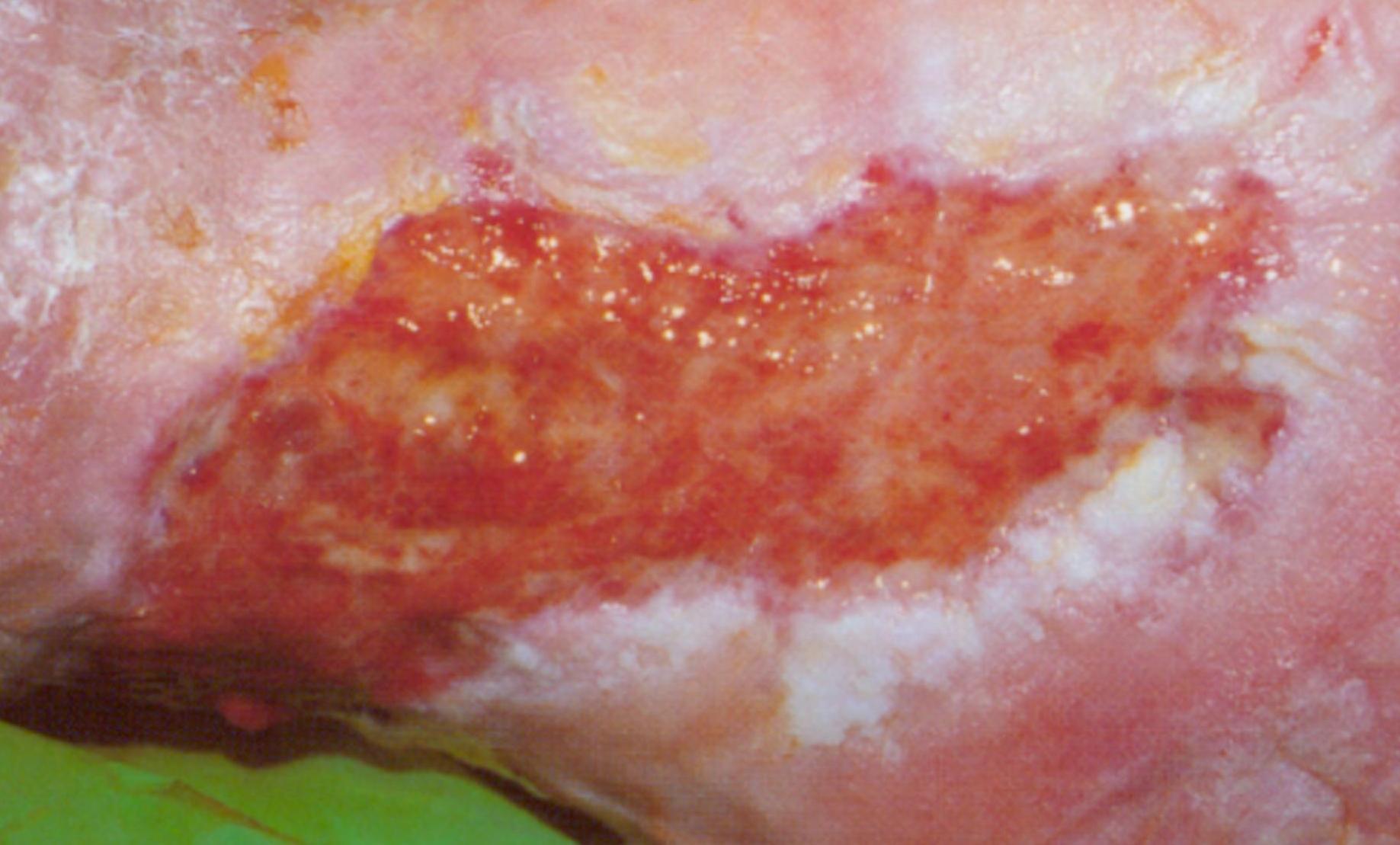Management Of Exudate And Wound Infection
Exudate
Maintenance of a moist wound healing environment is widely accepted as the ‘ideal’ environment for wounds to heal. Wound fluid or ‘exudate’ in the right amount can bathe the wound with nutrients and actively cleanse the wound’s surface. The amount of exudate which is produced is individual to the wound however always tends to rise during the inflammatory phase and if infection is present. A delicate balance to keep the correct amount of fluid at the wound interface needs to be achieved. This can be done by the use of modern dressing materials which either lock the exudate within the body of the dressing or allow the safe passage of exudate through the dressing by means of its MVTR (moisture vapour transmission rate)1.
Excessive wound fluid can inhibit wound healing and can lead to maceration of the peri-wound skin, further breakdown, and excoriation and skin sensitivities if inappropriately managed as it can be corrosive in nature. The use of skin barrier preparations such as LBF should be considered to protect the delicate peri-wound area.

Infection2
Wound Infection is caused by multiplying pathogenic bacteria which cause a reaction in the patient. Infection can be systemic, causing the patient to become ill or local, only affecting the wound bed and surrounding tissues. At assessment the health care professional should observe for the clinical signs of infection: pain, heat, erythema, cellulitus, oedema, pyrexia, malodour, delayed healing, wound breakdown, fragile granulation tissue, excessive exudate and the presence of pus. Patients who are immunocompromised cannot display these signs as they do not host a traditional immune response and therefore need to be monitored very closely and carefully.
Wounds which are necrotic / sloughy need to have this tissue removed as it can act as a focal point for bacteria and the peri-wound protected as the exudate levels can be high.
The species of bacteria present in the wound bed needs to be confirmed as this will lead to accurate treatment. Typical bacteria found in wounds include: staphylococcus aureus and pseudomonas aureginosa. Certain bacteria are associated with distinctive malodours.
Systemic wound infection may be treated with antibiotics; local wound infection may be managed with antimicrobial dressings or topical antiseptics. Any dressing selected should be considered for its viral / bacterial properties to minimise cross infection. Dressings should be changed more frequently and the wound closely monitored during this time.

References:
- World Union of Wound Healing Societies (WUWHS) Principles of best practice: Wound Exudate and the role of dressings: A consensus document. London MEP Ltd. 2007
- World Union of Wound Healing Societies (WUWHS) Principles of best practice: Wound Infection in clinical practice: An International consensus document. London MEP Ltd. 2008
Caveat: The information given is a guide only and should not replace clinical judgement.
